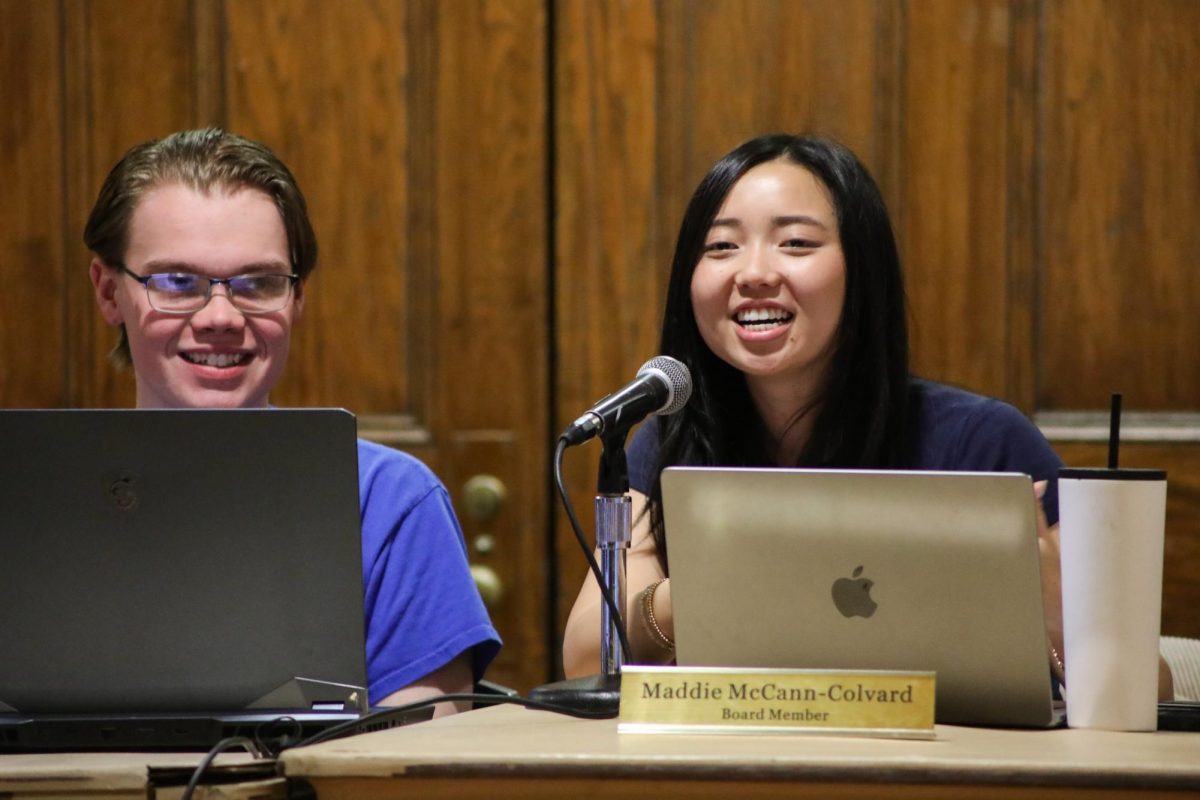Pitt senior creates viral ‘he/they of the day’ meme to break down gender barriers
Alyssa Carnevali | Staff Photographer
Norman, a senior English major, in front of the Cathedral of Learning.
October 12, 2022
From Spongebob’s Dirty Bubble to “the girl reading this <3,” the selections for the viral ‘he/they of the day’ Twitter meme are often met with replies that say “so true.”
Norman, a senior English major, is the creator of the on-going meme. What started off as a few ironic tweets about “he/theys in general” ended up receiving so much attention that it now takes form as the famous ‘he/they of the day’ format. Norman asked that their real first and last name not be used in The Pitt News for privacy concerns. He is referred to as Norman, his social media alias.
“I figured I’d get a good week of laughs with it — truly I never imagined my dumb joke would take off like it has,” they said.
That is the whole point of assigning a cartoon character as “he/they of the day” — according to Norman, the posts intentionally go against the grain of gender binary and how society holds nonbinary people to a standard of expression. They said it’s to challenge the notions of being cis and that gender is more than outward appearance.
Norman’s approach to the process of gender identification is more laid-back — have fun and embrace the fact that this process should be intentionally “silly, weird and uncouth.”
“Maybe [my gender]’s the Epcot ball,” Norman said. “Maybe I do feel gender envy from like every ‘Nightmare Before Christmas’ character. That’s the opposite of a problem in my opinion!”
Norman’s friend and twitter mutual, Eric Oliver, discussed how these characters and objects have always promoted gender flexibility and they feel people are just not used to understanding them in this way. The people who made these fictional characters intended to defy the boundaries society has placed on individuals in order to achieve pure creative expression. According to the World Health Organization, gender refers to the human characteristics that are socially constructed. Fictional characters and objects exist outside of this construct, and Oliver said it makes them the perfect role models for free gender expression.
“I think it brings attention to the fact that a lot of culturally familiar characters and objects already exhibit flexibility in gender,” Oliver said. “We are just not used to associating them with gender. I also think it’s very yass and slay.”
Ezra Blank, another friend and twitter mutual of Norman’s, said these memes are a fun way to get people to think about what they perceive as gender non-conforming behavior, style and visual language. They said they’re not afraid to be a “rotten little freak.” Norman promotes this behavior because it’s what makes people different.
“A point of the ‘he/they of the day’ format was to challenge the idea that there’s only one way of ‘appearing’ he/they or ‘appearing’ cis for that matter.” Norman said.
Norman said one day they may shave their whole body and wear a skirt to a queer event, the next day they may dress like a frat boy, and that both make them feel “hot!” They said doing things out of one’s comfort zone that “make you feel like a baddie” is the most powerful way to play with gender.
Aside from embracing gender identity and expression, Norman said their tweets also aim to push back against societal opinions on queerness and gender.
“The whole thing is kind of a fuck you to transphobes who try to paint non-cis people as delusional or unrealistic for essentially not being cis,” Norman said. “This is a response to that, in a way. Like, hell yeah I’m delusional. Maybe my gender is a helicopter!”
Norman said gender and the way it materially affects people is not a “joke,” but using the terms “delusional” and “unrealistic” to instead further fuel creative identity expression is a great example of returning the power back to oneself.
Norman’s post broke from its traditional format of a cartoon character or object to instead recognize themselves as he/they of the day after celebrating three years of sobriety in January. They mentioned that the flood of support from everyone online was ‘extremely heartwarming.’
To Norman, gender identity means more to them than they can express. They are currently finishing their Bachelor of Philosophy thesis on transgender and queer countervisuality, which they define as the “specifically trans/queer ways of challenging the hegemonic ways of beng seen.”
One example they give to describe their thesis is from the famous television show, “RuPaul’s Drag Race,” when Season 14 winner, Willow Pill, lifts up her skirt to reveal a replica of her own face on her crotch. Norman views this act as Willow turning around the general conservative idea that “gender is what’s in your pants” and instead giving that power back to herself.
Norman finds moments like these, where gender revolves around what is seen, as fascinating and much deserving of critical attention. They are currently applying to PhD programs to continue on with the ideas discussed in their thesis.
Gender identity is about the freedom that comes with being silly and the power behind refusing to conform, according to Norman, and Willow’s finale performance is a prime example.
“Putting that moment in the contexts of things like the surveillance state, racial capitalism at large, transphobic violence, and the general conservative illogic of ‘gender is what’s in your pants,’” Norman said, “I read Willow’s reveal as turning all that on its head, refusing to be intelligible, refusing to be seen in a way that makes sense to the state and to dominant cishet logic.”



